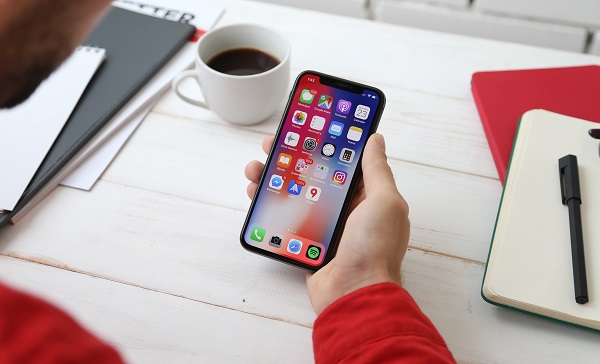The Power of SMS in Marketing: Does it Still Work?

What’s more, Apple was turning a higher profit off the app store than it ever had, and the Android ecosystem was spreading its roots far and wide.
Surely a dated technology such as SMS couldn’t survive such an onslaught. So, how exactly has SMS for business held up against the barrage of negative press it had received since the birth of the likes of WhatsApp?

From developing integrations to strategic support, from creating creative concepts to optimizing results.
The surprising resilience of SMS
It would perhaps come as a surprise to many that not only were the critics wrong about the eventual death of SMS, they had it completely backwards. Not only did the presence of SMS in the marketing world grow to an astonishing $56 billion in 2017, but it was also predicted to be worth over $90 billion by 2021.
So, how did a technology so hopelessly outclassed bynewer rivals manage to accomplish such a feat?
How SMS managed to survive the eclipse
The first factor that made SMS such an explosive technology was the fact that it comes preinstalled on every device. There’s no need for extra configuration, so even the less tech-savvy have it on their phones by default. And this leads to the second relevant point.
Since every device has it, it’s an opt-out rather than an opt-in system. This works perfectly for marketers since customers have the option to opt out. Of all channels of communication, it had the highest open rate, receives the best responses and is delivered much faster. It’s no surprise, then, why over 33 million marketing SMSs are sent monthly in the UK alone.
Even so, SMS remains one of the most underutilizedtechnologies in the marketing world. When used together with other innovationslike deep linking, it’s possible to increase user engagement five times over.
How SMS is used as a modern marketing tool
SMS is very far from being a dead technology in the marketing world. The numerous applications it has just serve to back that up.
There are several different ways in which SMS is used as a marketing tool, some uses more pronounced than others. The following are some of the most common use cases for this kind of marketing.
As a tool for improving consumer and brand engagement
One of the effects of the proliferation of messagingapps like WhatsApp has been a sudden shift in consumer expectations.
Now more than ever, users expect two-way communication with marketers rather than robotic responses from ‘no-reply’ emails. This effect is especially pronounced in people using these messaging apps for e-commerce-related purposes.
As a result, user engagement with the brand is more likely to shoot up when SMS is used as a medium of communication than nearly any other. Effective messages in an SMS ensures that will be opened, read and responded to.
You can opt for custom writing services to get your writing work done. The online writing services like Essayhave not only provide best dissertation and thesis but also email content and short punchlines and SMS text.
Marketers while leverage SMS are also more likely to have mobile-specific tactics in their employment. As such, it’s an easy method for them to use to connect with customers and vice versa.
Increasing consumer reach
Since no other form of communication comes anywhere near the kind of reach SMS has, if used correctly, it can be a powerful tool. This is especially important in emerging markets where smartphone penetration is still quite low.
The customer doesn’t need the internet, a data plan,or to download an app. It’s a method of communication that comes in-built withbasically every phone in the world.
Easy opting in and out
Most SMS marketing campaigns are opt-in first but are just as easy to opt out of. Typically, the customer is allowed to respond to the message with a simple command such as ‘STOP‘ to opt out of the campaign.
Network requirements differ from place to place, soenrolling to the campaign may be opt-in. Similarly, the customer can reply witha simple command to opt in.
Higher read and response rates
SMSs are opened nearly 98% of the time and responded to about 45% of the time. This is much higher than the next closest competitor – email, which comes at a measly 20% and 6% for read and response rate respectively.
Two-channel SMSs are very effective for answeringcustomer queries on the go, by having them routed to a different number.
Higher delivery rates
One of the biggest downsides of using email marketing,regardless of the benefits, is just how easy it is to fake an email address.
After which, it’s still an upward struggle to avoid hitting the spam box and somehow finding a way the recipient to safe through a whole collection of emails to see yours. Phone numbers are much harder to fake, at least for the average user.
Who is using SMS marketing?
No matter how useful the technology is, it’s only as valuable as the number of people that depend on it. So, who exactly are the big names behind the popularity of SMS and do the statistics support them?
Kiehl’s 73% Redemption Rate Through SMS Marketing
Kiehl’s is an American cosmetics brand that carries out a 6-month long SMS marketing experiment. With the consent of their customers, they geofenced areas around their stores and would alert customers whenever they were a certain distance close to one of the test stores.
The message would contain details about discounts and offers. The opt-in program attracted a 73% purchase rate from everyone that acknowledged receiving the message.
Pizza Hut’s campaign was twice as effective as online marketing
With pretty much the same methodology and Kiehl’s, Pizza Hut noted a 142% increase in the efficiency of incremental sales than, notably, online advertisement. This test happened over a 15-month period across all 340 locations spread out across the UK.
6,000 new SMS opt-ins in a single week for Westfield Mall
Lastly, Westfield Mall showed just how effective SMS was as a medium of gaining a new audience by offering subscribers a chance to win $1000 worth of shopping. Within a single week, they had received 6,000 new subscribers. The promotion was done through signage throughout the mall and announcements at various intervals to the shoppers.
How effective is SMS marketing, really?
When it’s all said and done, SMS isn’t a solution for every marketing challenge out there. SMS does have its advantages and definite downsides. These should probably be considered, depending on your use case, before settling on it.
The downsides
First things first, SMSs aren’t an encrypted method ofcommunication, and phone numbers are easy to spoof, given a bit of time. It’squite easy for a bad actor to masquerade themselves as representative of yourbrand and sabotage it.
Besides, the messages can also be intercepted in transit by a third-party, so it’s not secure for sending information that’s meant to remain secret.
SMS also doesn’t support images, video or other popular communication media that’s popular today. Emails with an image or video have been shown to be a lot more effective at attracting user attention than plain text emails. SMS forgoes the advantages these forms of media present.
SMS also doesn’t offer a reliable way to track whetherthe message has been delivered or read. This can normally be achieved using anembedded image pixel on email, for instance. The absence of this abilityseverely limits how well SMSs can be curated and personalized.
Lastly, the Short Messaging Service (SMS) as its name suggests, was designed to send short messages. Anything over a certain character limit is going to cost you extra money to send. Besides which, customers also expect SMSs to be short. If they contain too much information, they are more likely to be perceived as spam and either blocked or opted out of.
The positives
As a brief recap of some of the points mentionedabove, SMS has a lot going for it.
- It provides higher engagement rates since, by default, the messages are meant to be short and thus more likely to be read.
- Has high deliverability rates. Numbers are a lot harder to spoof than, say, creating a fake email.
- It has a high read/open/response ratio because of the low amount of noise in the inbox.
- Are relatively cheap to send and very easy to automate. They don’t need additional media like videos or pictures.
- Provide the ability to deep link parts of a native app without having to depend on external services as is the case with web apps.
Conclusion
SMS has come quite a long way since the days of its inception, but barely anything has changed about it since then. It still remains one of the most effective ways of conveying short messages to users. With the highest open, read and response rate of any other medium, the inertia it has gathered over the years is not going to disappear any time soon.